In light of Black History Month, here are 28 people and events that have helped shape American history.
1. Marsha P. Johnson, one of the black first trans-activists (1945-1992).
2. The Haitian Revolution.

The Haitian Revolution
Ulrick Jean-Pierre
Haiti was once the richest slave nation in the world. Nicknamed the "pearl of the Antilles," it produced half of the worlds sugar supply and generated about 2/5ths of France's economy. Under General Toussaint L'Ouverture, Haiti had the most important slave revolt in the entire western hemisphere. In two years, Haiti was free from France, but in 1802 Napoleon Bonaparte reversed the emancipation of the slaves and L'Ouverture was arrested by the French.
L'Ouverture's successor, Jean-Jacques Dessalines lead another revolt. On January 1st, 1804 he declared Haiti independent and ordered the slaughter of every French person on the island, making Haiti the worlds first black republic.
3. Ruby Bridges, and the beginning of school integration.
Ms. Bridges is known as the first African American to attend an all-white school in the South. In 1960 her parents responded to a request from the NAACP that Ruby take the test that determined whether or not she could attend an all-white school. The test itself was exceptionally hard and was designed for failure. Ruby, along with a handful of other students passed.
On November 14th, 1960, Ruby started her first day at her new school and had to be escorted by federal marshals to protect her from the protestors. Aside from being tormented by racist protesters, Ruby was also ostracized, as many teachers weren't willing to teach her. One teacher, Mrs. Henry, agreed to have Ruby as her student. Ruby soon became Mrs. Henry's only student as the parents of every other white student had them removed from the class --- and even the school.
After a woman threatened to poison Ruby, she was not allowed to eat anything at school that wasn't from home. Soon after that, she was not allowed to go to the cafeteria, go out to recess or be around the other children as she was harassed and threatened daily.
4. Fannie Lou Hamer, live at the Democratic National Convention.
Hammer was a civil rights activist who worked for voting rights and co-founded the Mississippi Freedom Democratic Party.
In 1962 Hammer, along with 17 others traveled to the county courthouse to register to vote. Not only was she fired from her job for attempting to register, but she was forced to leave the plantation on which she lived.
In the summer of 1964, the Mississippi Freedom Democratic Party was organized with the purpose of challenging Mississippi's all-white and anti-civil rights delegation to the televised Democratic National Convention. Hamer was one of the speakers. At the time, President Lyndon Johnson was in office. Afraid of the effect of Hamer's speech would have on the American people; he called an emergency press conference to divert the press. The television networks quickly switched to live coverage of the White House thinking that President Johnson had news about his new VP, but instead, Johnson spoke about the 9-month shooting anniversary of John Connally, a governor. In spite of this, several networks aired Hamer's full speech on their nightly news programming.
She also coined the phrase, "Sick and tired of being sick and tired" during this speech
5. The Little Rock Nine.
The Little Rock Nine were the first black teenagers to attend an all-white high school, Central High School, in Little Rock, Arkansas, in 1957. Although Brown v. Board of Education outlawed segregation in schools, many school systems defied the law by intimidating and threatening black students.
6. Marian Wright Edelman, and the Children's Defense Fund.

Marian Wright Edelman
Edelman is a civil rights activist. After being arrested at a sit-in Edelman was appalled at the way Blacks were treated in the legal system. Many couldn't afford lawyers and the ones who could, had a hard time finding one that would represent them. After graduating from Yale Law School, she became the first black woman elected to the Mississippi State Bar. She represented African Americans in civil rights cases and started the Children's Defense Fund.7. The slayings of Thomas Moss, Will Stewart & Calvin McDowell.
Moss, Stewart, and McDowell were store owners in the late 1890s in Mississippi. When their store threatened to put William Barrett, a white competitor out of business, Barrett and a white mob attempted to destroy his store. Moss and his business partners defended themselves. Shots were fired and a few white men were injured. Moss, Stewart, and McDowell were jailed until the mob broke into the jail, and kidnapped them. Before being executed, Moss was asked if he had any last words, he is quoted as saying, "Tell my people to go west. There is no justice for us here."
8. Maria Ziadie-Haddad, the first black female commercial captain.
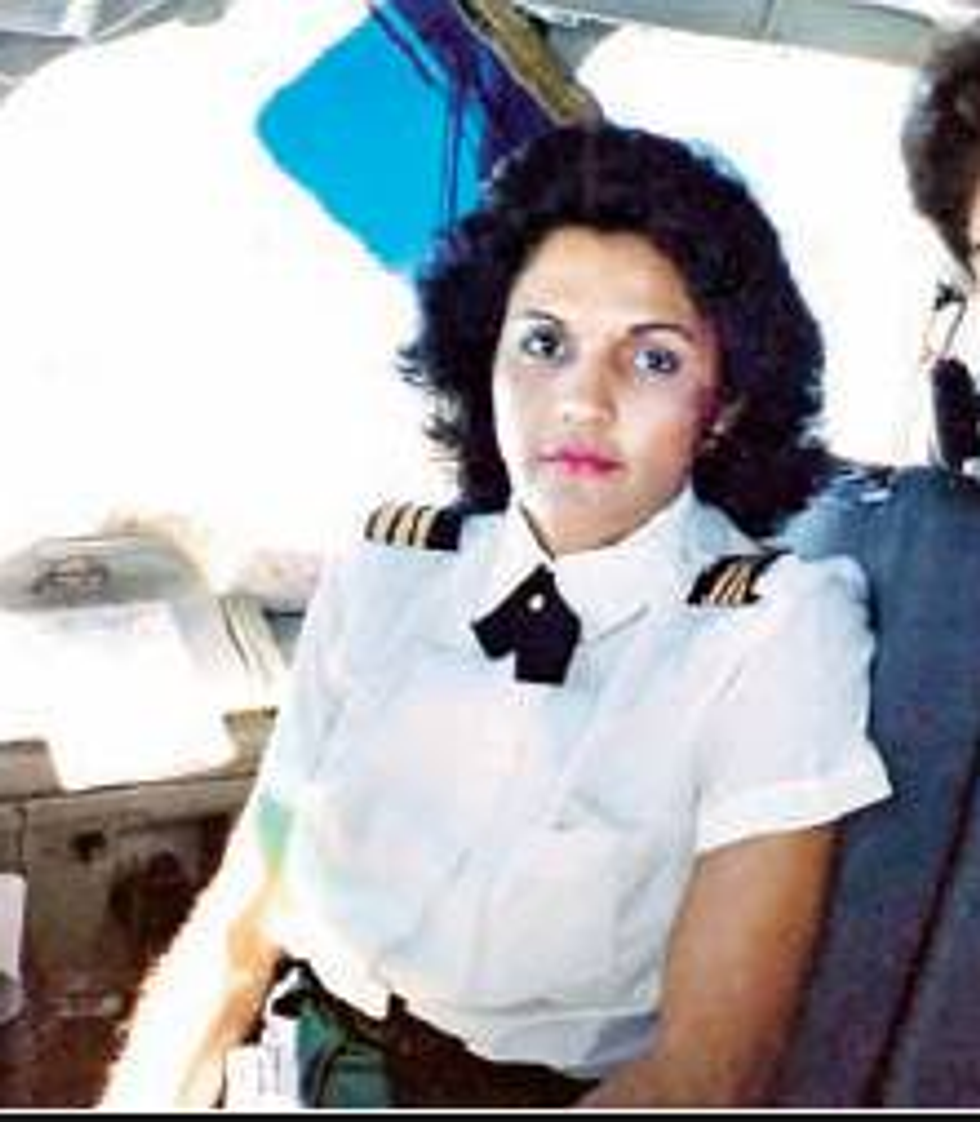
Maria Ziadie-Haddad
Ziadie-Haddad was one of the first female commercial jet pilots in the western hemisphere to obtain a pilots license. In 1979, she was hired by Air Jamaica to fly the Boeing 727. She was the airlines first female captain.
9. Angela Davis, the Black Panther.
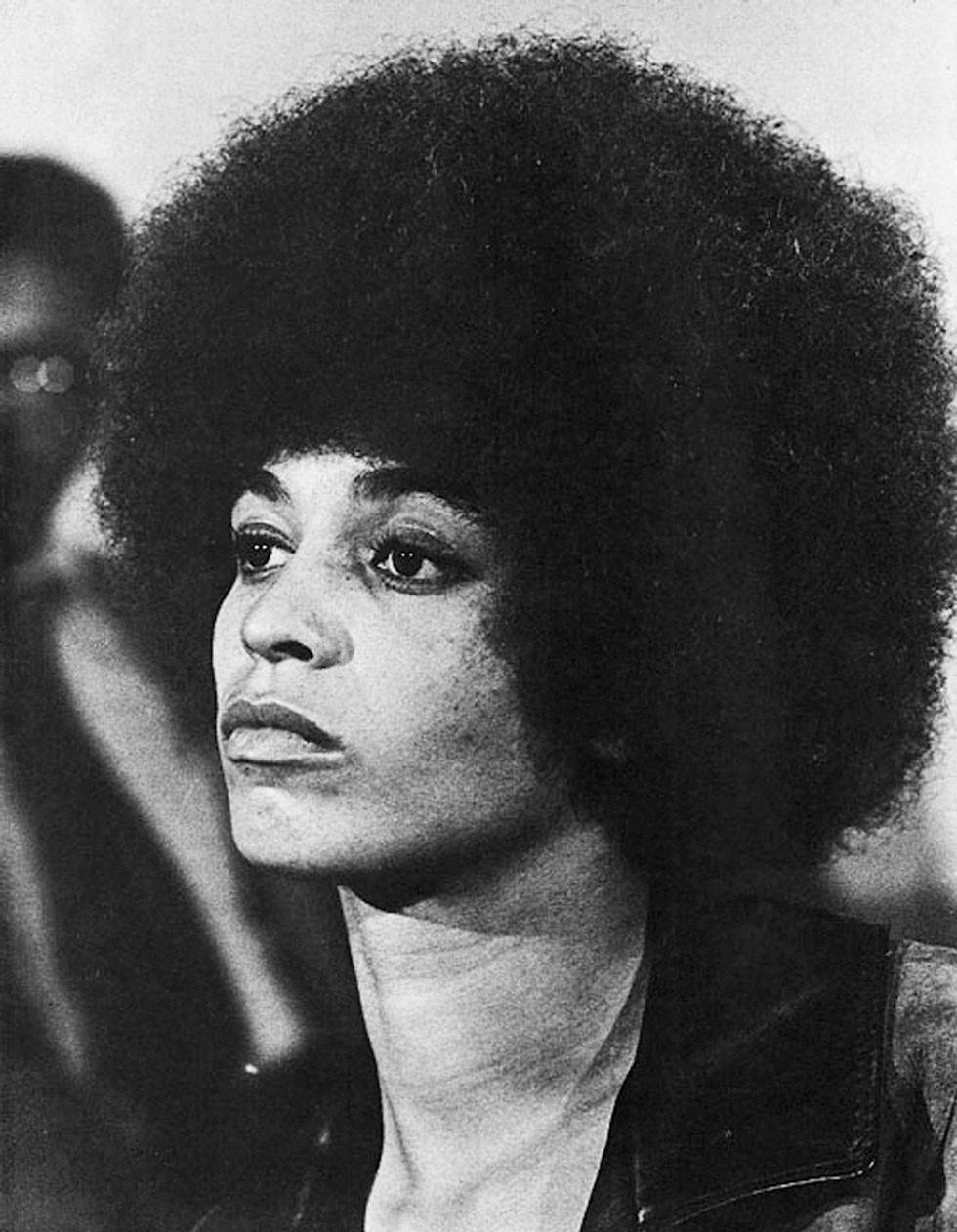
Angela Davis
Angela Davis is an African-American educator and activist. As a teenager, Davis organized interracial study groups, which were broken up by the police, but later emerged as a nationally prominent counterculture activist and radical in the 1960s. She was the leader of the Communist Party USA, and had close relations with the Black Panther Party.
In 1970 Davis was charged with aggravated kidnapping and first-degree murder for purchasing a gun which was later used by a 17-year-old to kill a judge. David fled and became the third woman on the FBI's Ten Most Wanted Fugitive List. She was captured later that year in New York City.
After her release, Davis visited Cuba. She said that she witnessed what she perceived to be a racism-free country. This led her to believe that "only under socialism could the fight against racism be successfully executed." When she returned to the United States her socialist leanings increasingly influenced her understanding of race struggles within the U.S
10. The Hayes-Tilden Compromise Of 1876.
The presidential election of 1876 provided the means for the defeat of Reconstruction and the reconciliation of the North and the South. The election between Hayes and Tilden was deadlocked in the electoral college. A compromise was offered by the North (the ruling class at that time). If Hayes was given the 19 electoral votes that he needed to win the presidency, the government would withdraw the federal troops they had occupying the South. This disenfranchised ex-slaves in the South by taking away the little power that they had and gave it to the former slave owners.
After the compromise took effect, the last African American congressman left Congress in 1901 and Jim Crow constitutions passed throughout the South.
11. Red Summer.
Red Summer refers to the race riots that occurred in more than three dozen cities in the United States during the summer and early fall of 1919. In most instances, whites attacked African Americans. In some cases, many blacks fought back, notably in Chicago, where, along with Washington, D.C. and Elaine, Arkansas, the greatest number of fatalities occurred. Activist and author James Weldon Johnson coined the term "Red Summer and organized peaceful protests against the racial violence of that summer.
12. Emmett Louis Till (1941-1955), the boy who showed everyone what was really happening in The South.
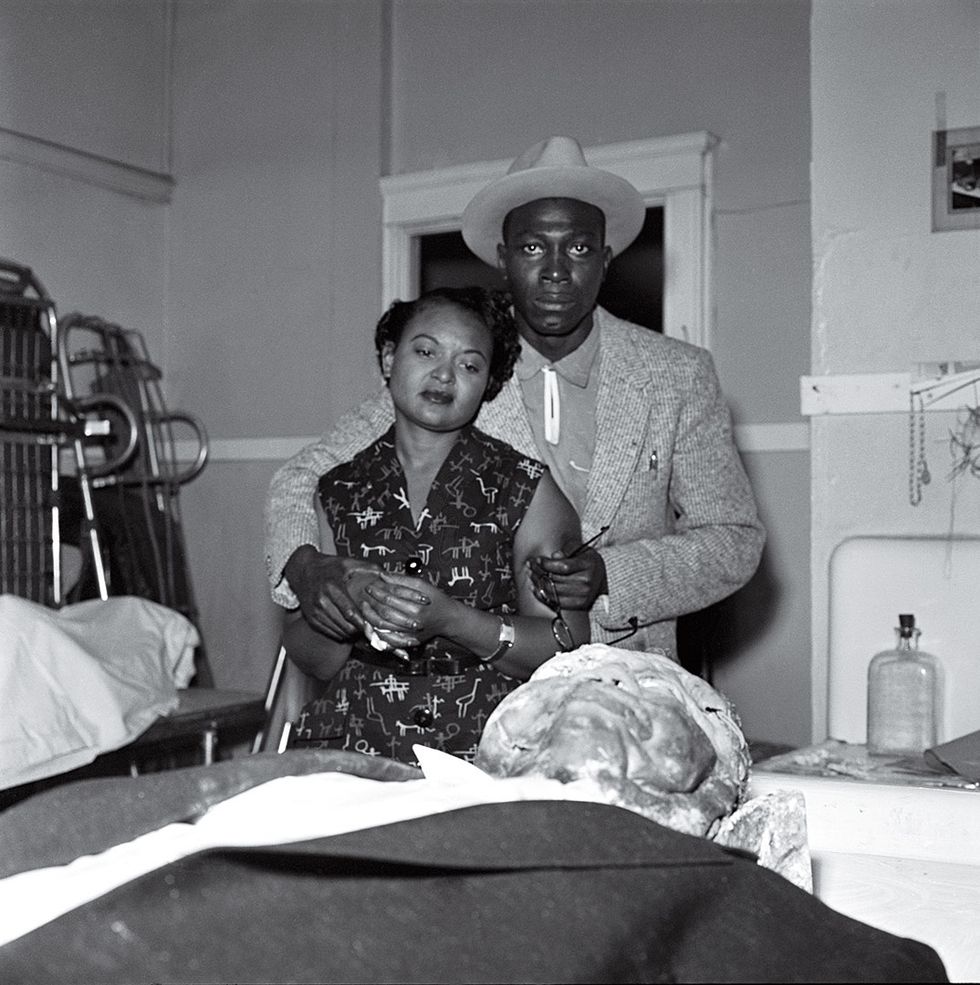
Mamie Till as she looks down at her son, Emmett.
In the summer of 1955, Emmet Till traveled to Money, Mississippi with his uncle to spend time with his cousins. A week after arriving, Emmet was pulled out of the Tallahatchie River. He had been beaten, one of his ears was shot off, he was missing an eye and his head was cracked in two. When his body was sent home to Chicago, the stench was so bad that the local mortician and his mother were legally barred from opening his coffin. Police arrested Roy Bryant and J.W Milam. They were charged with first-degree murder but found not guilty. They claimed that Emmet had whistled at Roy Bryant's wife and that all they did was ruff him up to teach him a lesson.
A year later, Bryant and Milam told their story to a magazine. They admitted to the murder and gave a full account of details. Because they were protected by double jeopardy, they couldn't be prosecuted again.
13. The Children's Defense Fund.
Children's Defense Fund is an American child advocacy and research group, founded in 1973 by Marian Wright Edelman. CDF works with individuals, communities and policymakers to enact, fund and implement public policy and promote successful programs that lift children out of poverty, protect them from abuse and neglect, ensure access to health care and quality education, and provide a moral and spiritual foundation.
14. Denise McNair, Carole Robertson, Addie Mae Collins & Cynthia Wesley (d. 1963), and the 16th Street Church Bombing.
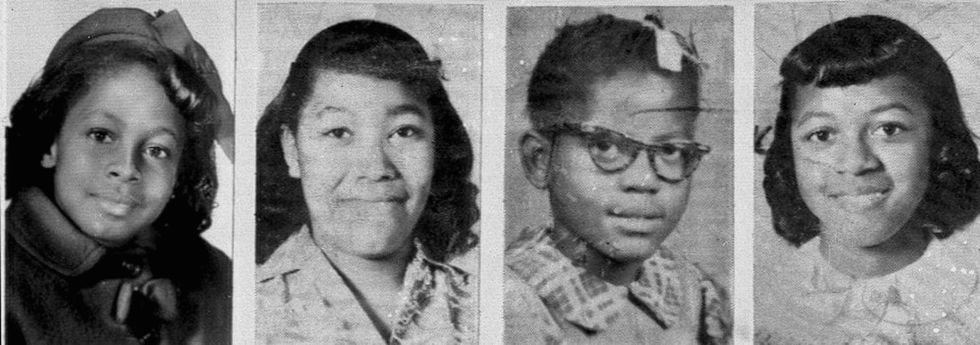
Denise McNair, Carole Robertson, Addie Mae Collins and Cynthia Wesley
On September 15th, 1963 Bobby Frank Cherry, a demolitions expert, and three other white supremacists—Robert Chambliss, Thomas Blanton, and Herman Cash bombed the Sixteenth Street Baptist Church in Birmingham, Alabama. Four children, Denise McNair, Cynthia Wesley, Carole Robertson, and Addie Mae Collins were killed while attending bible school.
Chambliss was convicted to life in prison in 1977 but died in 1985. Blanton and Cherry were indicted in 2000 and Cash died in 1994, never being charged.
15. "Birth Of A Nation."
D.W Griffith's, "Birth of A Nation" is literally the most racist piece of filth to ever be made. The film helped re-birth the KKK, and it features white men in "blackface".
16. The Tuskegee Experiment.
The Tuskegee syphilis experiment was an infamous clinical study conducted between 1932 and 1972 in Tuskegee, Alabama by the U.S. Public Health Service. It's "purpose" was to study the progression of untreated syphilis in African American men. The men who volunteered thought they were receiving free health care from the U.S. government. The men were given free medical care, meals, and free burial insurance for participating in the study, but they were never told they had syphilis, nor were they ever treated for it.
According to the Centers for Disease Control, the men were told they were being treated for "bad blood". The researchers knowingly failed to treat patients appropriately after the 1940s validation of penicillin as an effective cure for syphilis. The Tuskegee scientists continued the study without treating any participants and withholding penicillin and information from the patients.
A leak to the press eventually resulted in its termination on November 16, 1972. The victims of the study included numerous men who died of syphilis, wives who contracted the disease, and children born with congenital syphilis.
This experiment is what led to the 1979 Belmont Report and the establishment of the Office for Human Research Protections (OHRP). It also led to federal laws and regulations requiring Institutional Review Boards for the protection of human subjects in studies.
17. The State of Mississippi.
Mississippi was the last state to abolish slavery. It did so on February 7th, 2013.
18. Diane Nash, and the de-segregation of lunch counters in Nashville.

Diane Nash
Diane Nash is a civil rights activist. She led a peaceful march through Tennessee to confront the mayor of Nashville on lunch counter segregation. The mayor responded that he thought it was wrong to discriminate on a person due to their race or color. 21 days later, Nashville officially desegregated its lunch counters. She was also instrumental in organizing the Freedom Rides, in which Blacks and Whites would ride together through the south to desegregate interstate travel.
19. Medger Evers (1925 - 1963), Myrlie Evers-Williams and the ultimate sacrifice.

Medger and Myrlie Evers
Medger Evers was an activist in Mississippi and the states field secretary for the NAACP. He worked to end segregation in public facilities, as well in the University of Mississippi and fought for voting rights for African Americans. On June 12th, 1963, Evers was shot in his back while walking to his front door. Byron De La Beckwith, a white supremacist, was charged twice for his murder, but both times his all-white juries were deadlocked.
In 1990 his case was reopened and Byron De La Beckwith was found guilty and given life in prison. He passed away in 2001, only serving 11 years.
Myrlie Evers- Williams, the widow of Medger Evers is also a civil rights activist who led voter registration drives for Blacks in the 1960s. On that night of June 12th 1963, she and her children bore witness to her husband's assassination.
20. Pan-Africanism.
Pan-Africanism is a political and cultural movement founded on the idea that members of the African Diaspora share similar needs and ideas and therefore, must cooperate in order to create a united social body that transcends borders and nationality. Initially, pan-Africanism was an anti-slavery and anti-colonial movement what worked toward a cohesive African nation where all members of the diaspora could live.
21. The Tulsa Riots.
On May 31st and June 1st, 1921 a group of white people attacked and burned down the Greenwood District, a Black community in Tulsa, Oklahoma, also known as Black Wall Street. BWS was the wealthiest Black community in the country.
22. Senator John Lewis and the walk from Selma to Montgomery.

John Lewis on the Edmund Pettus Bridge
Senator Lewis has been elected to the U.S House of Representatives 16 times in Georgia. Lewis played a pivotal role in the civil rights movement, opening up Freedom Schools in Mississippi during Freedom Summer and marching for voting rights. March 7, 1965, Lewis was a part of the historic march from Selma to Montgomery. The march was nicknamed "Bloody Sunday" after Alabama State Troopers attacked Lewis and the other marchers with clubs and gas.23. The Scottsboro Boys.
Scottsboro Boys were Charles Weems, Clarence Norris, Andy Wright, Ozie Powell, Olen Montgomery Eugene Williams, Willie Roberson, Roy Wright, and Haywood Patterson. In 1931, nine Black teens were accused of raping two white women, Victoria Price and Ruby Bates, on a train.
Even though there was medical evidence to suggest that the two women were never raped at all and that Victoria Price had recently had sex with her boyfriend, eight of the nine boys were convicted. Though Price's story was filled with inconsistencies, she won over the all-white jury. The only one who was not convicted and sentenced to death was Roy Wright, who was 12 years old at the time. Willie Stokes was executed on July 10th, 1931 for the crime.
After anger from the North, 13-year old Eugene Williams was granted a new trial because he was a juvenile. In November of 1932, the U.S Supreme Court decided to review the cases of all the boys. In a 7-2 vote, they reversed the convictions of the remaining boys on the grounds that they didn't have adequate legal representation.
Eventually, all of the boys got new trials. They were represented by Samuel S. Leibowitz, a lawyer from New York. Haywood Patterson's re-trial was first. When Price was on the stand for the prosecution, her stories were colorful, but when she was cross-examined by the defense, she often replied with, "I can't remember," and "I can't say." At one point, Leibowitz showed her a replica train of the one she was one. He asked her to confirm that the train he was holding looked like the one that she was riding that day and she replied with, "No," saying that the one she was on was much bigger. It also came out that before accusing the boy's she and a male friend has recently been jailed for adultery.
During Patterson's trial, Ruby Bates admitted to lying and said that neither she nor Price had ever been raped by the boys. Patterson was still convicted again to death. Afterward, Judge James Horton shocked and angered everyone by not agreeing with the conviction called the women liars. After setting aside Patterson's conviction and granting him a new trial, he eventually lost his seat on the bench.
The boys were then transferred to Judge William Callahan's court, where Patterson was sentenced to death AGAIN, along with Clarence Norris. In 1935 Patterson and Norris' cases were then sent to the U.S Supreme Court. Their convictions were overturned on the basis that the jury was all white.
For years the remainder of the boys were in and out of court. Sentences for the rest ranged from 75 years to death. One was shot in prison by a guard and permanently injured, and two escaped but were later convicted of other crimes and sent back to prison. Clarence Norris jumped parole in 1946 and went into hiding. He was found in 1976 and pardoned by Governor George Wallace, by which time the case had been thoroughly analyzed and shown to be an injustice. Norris later wrote a book about his experiences.
24. Julian Bond (1940 - 2015), the first African American to receive the nomination for Vice President of the United States.

Julian Bond
Julian Bond was a Civil rights activist, politician, and professor. He was fortunate enough to have taken the one and only philosophy class ever taught by Rev. Martin Luther King at Morehouse College and helped to start the Student Nonviolent Coordinating Committee. He served in both chambers of the Georgia legislature and was the first African American to ever receive a nomination for Vice President of the United States.25. The 332 Fighter Group/477 Bombardment Group.
The Tuskegee Airmen were the first African American military aviators in the United States Army. They served during WWII. They were subjected to racism, discrimination and although they were fighting for America in Europe, they still had to adhere to the Jim Crow laws of the south. Their missions lasted months longer than their white counterparts due to the fact that they were not allowed to rotate back to the US in order to train white pilots.
26. Amenemope, the Egyptian Pharaoh and his connection to The Bible.
Egyptian pharaoh Amenemope's text, "Instructions for Well-Being" is said to be the basis of the ten commandments. Evidence shows that the scripture closely echoes much of Amenemope's "instructions." Today, Christians still (mostly unknowingly) allude to Amenemope when they evoke the divine at the end of a prayer, "AMEN"
27. Wednesdays In Mississippi.
Wednesdays In Mississippi was a civil rights activist group created by Dr. Dorothy Height in the 1960s. Every Tuesday a group of black and white women from the north would sneak down to Mississippi. They would spend Wednesdays there working with Freedom Schools to educate the black youth. As they had to be careful not to get caught, their trips would only last three days so they would go on Tuesday and head home on Thursdays. Many of them were murdered and their makeshift schools burned, but every week they would return and create a new school in a secret location.
28. "We Are The World."

"We Are The World"
"We Are The World" was song and charity single originally recorded by the supergroup USA for Africa in 1985. Following Band Aid's, "Do They Know It's Christmas?" project in the UK, Harry Belafonte, along with fundraiser, Ken Kragen came up with an idea for an American benefit song for African famine relief. Michael Jackson and Lionel Richie wrote the song and it was released on March 7th, 1985. "We Are The World" became the fastest-selling American pop single in history and was the first song to earn a multi-platinum certification. Some of the contributing artists were; Diana Ross, The Jackson 5, The Pointer Sisters, Stevie Wonder, Dionne Warwick, Smokey Robinson and Tina Turner.
Black history shouldn't only be celebrated in the month of February, it should be celebrated and respected all year round. These countless activists should be household names and their work should be inspiration to keep pushing for a more equal and just future. The greatest parts of America would not be so without the contributions, sweat, tears and even lives of black people and our black ancestors.



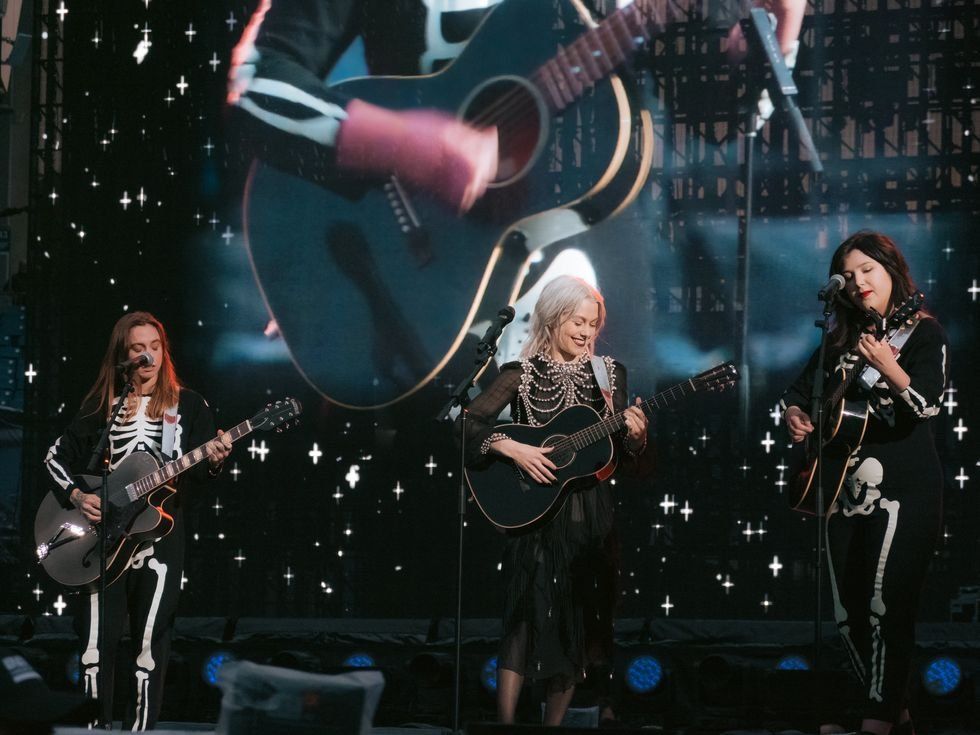
 Energetic dance performance under the spotlight.
Energetic dance performance under the spotlight. Taylor Swift in a purple coat, captivating the crowd on stage.
Taylor Swift in a purple coat, captivating the crowd on stage. Taylor Swift shines on stage in a sparkling outfit and boots.
Taylor Swift shines on stage in a sparkling outfit and boots. Taylor Swift and Phoebe Bridgers sharing a joyful duet on stage.
Taylor Swift and Phoebe Bridgers sharing a joyful duet on stage.













